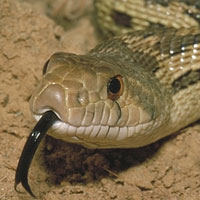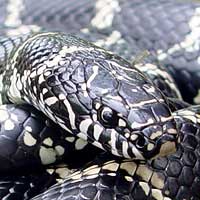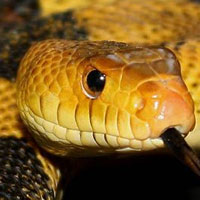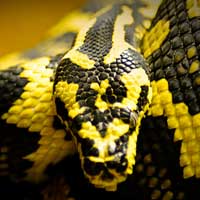All You Need to Know About the Lancehead Snake
The Lancehead refers to several species within the genus Bothrops, which belong to the Viperidae snake family, characterized by their highly venomous nature, long hinged fangs, and heat-sensing pits, making them efficient predators commonly found across Central and South America in diverse habitats ranging from rainforests to agricultural areas.
Scientific Name: Bothrops
Snake Family: Viperidae
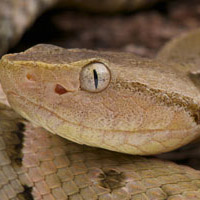
An Overview of the Lancehead
The Lancehead snake (Bothrops spp.) is one of the most venomous and widespread pit vipers in Central and South America. Recognized for its triangular head and highly toxic venom, this snake plays a critical role in controlling rodent populations. Despite its fearsome reputation, the Lancehead is a vital component of its ecosystem, balancing prey populations while maintaining biodiversity.
Where Does the Lancehead Live?
The Lancehead snake inhabits a variety of ecosystems across its range in Central and South America. Key habitat features include:
- Geographic Range: Found from southern Mexico to northern Argentina, including islands in the Caribbean.
- Preferred Environments: Tropical rainforests, savannas, lowland forests, and agricultural fields.
- Climate: Thrives in warm, humid climates typical of tropical and subtropical regions.
These snakes are highly adaptable and can thrive in both pristine forests and disturbed areas near human settlements. The presence of water sources such as rivers and swamps is critical for their survival. Below is a summary of their habitat preferences:
| Habitat Feature | Description |
|---|---|
| Geographic Range | Central and South America |
| Preferred Terrain | Rainforests, savannas, and fields |
| Climate | Tropical and subtropical |
What Does the Lancehead Eat?
The Lancehead snake is a carnivorous predator with a diet that reflects its adaptability. Key dietary details include:
- Primary Prey: Small mammals such as rodents, which are abundant in its habitats.
- Occasional Prey: Birds, frogs, lizards, and other reptiles.
- Hunting Method: Uses heat-sensing pits to detect warm-blooded prey before delivering a venomous strike to immobilize it.
This snake’s ability to consume a wide range of prey makes it a critical player in pest control, particularly in agricultural areas where rodents can cause significant crop damage. After striking, the Lancehead waits for its venom to subdue the prey before consuming it whole.
Understanding the Behavior of the Lancehead
The Lancehead is a defensive and reclusive species. Key behavioral traits include:
- Activity Patterns: Primarily nocturnal, becoming active at night to hunt and avoid predators.
- Defensive Behavior: When threatened, it may coil, hiss, and deliver warning strikes before resorting to biting.
- Social Behavior: Solitary, except during the mating season or in areas with abundant food sources.
Despite its venomous reputation, the Lancehead avoids confrontation and prefers to retreat if given the opportunity. Understanding its behavior is essential for safely coexisting with this snake in shared environments.
Health and Lifespan of the Lancehead
The Lancehead snake has a relatively long lifespan and is a resilient species. Important health considerations include:
- Lifespan: 10-15 years in the wild, with some individuals living up to 20 years in captivity.
- Health Challenges: Habitat destruction, human-wildlife conflict, and parasitic infections.
- Predators: Birds of prey, larger reptiles, and mammals such as wild cats pose threats, especially to juveniles.
Conservation efforts focused on habitat preservation are critical for ensuring the long-term survival of the Lancehead in the wild.
How Does the Lancehead Reproduce?
The Lancehead has a reproductive cycle that ensures its survival in challenging environments. Key details include:
- Mating Season: Typically occurs in the rainy season, when resources are abundant.
- Reproductive Method: Ovoviviparous, meaning females give birth to live young rather than laying eggs.
- Litter Size: Can produce between 10-80 offspring per cycle, depending on the size and age of the female.
- Hatchling Behavior: Newborns are fully venomous and independent from birth.
The high reproductive rate of the Lancehead helps sustain populations despite high juvenile mortality rates due to predation.
Safety Guidelines for Handling the Lancehead
Handling the Lancehead requires expertise and extreme caution. Key safety tips include:
- Use appropriate tools such as snake hooks and secure transport containers.
- Wear protective gloves and boots to minimize the risk of envenomation.
- Ensure enclosures are escape-proof and mimic the snake’s natural habitat.
- Keep antivenom readily available and have an emergency plan in place.
Only trained professionals should handle this species to ensure safety for both the handler and the snake. Public education about the Lancehead’s behavior and ecological role can also help reduce human-snake conflicts.
Disclaimer
The information provided in this article is for educational purposes only. SnakeEstate strongly advises against handling or interacting with venomous snakes, such as the Lancehead, unless you are a trained and licensed professional. These snakes pose significant risks, and improper handling can result in serious injury or death. Always adhere to local regulations and prioritize safety when dealing with wildlife.
Other Snakes In This Species
 Asp Viper
Asp Viper Black Mamba
Black Mamba Boomslang
Boomslang Brazilian Coral Snake
Brazilian Coral Snake Bushmaster
Bushmaster Coastal Taipan
Coastal Taipan Common Death Adder
Common Death Adder Common European Adder
Common European Adder Copperhead
Copperhead Coral Snake
Coral Snake Cottonmouth
Cottonmouth Eastern Brown Snake
Eastern Brown Snake Eastern Diamondback Rattlesnake
Eastern Diamondback Rattlesnake Egyptian Cobra
Egyptian Cobra Fer-de-lance
Fer-de-lance Forest Cobra
Forest Cobra Indian Cobra
Indian Cobra Inland Taipan
Inland Taipan Jameson’s Mamba
Jameson’s Mamba King Cobra
King Cobra Lancehead
Lancehead Lataste’s Viper
Lataste’s Viper Malayan Krait
Malayan Krait Mojave Rattlesnake
Mojave Rattlesnake New Guinea Small-eyed Snake
New Guinea Small-eyed Snake Nose-horned Viper
Nose-horned Viper Puff Adder
Puff Adder Russell’s Viper
Russell’s Viper Saw-scaled Viper
Saw-scaled Viper Solomon Island Coral Snake
Solomon Island Coral Snake South American Rattlesnake
South American Rattlesnake Tiger Snake
Tiger Snake Western Diamondback Rattlesnake
Western Diamondback Rattlesnake



